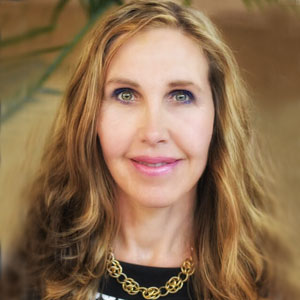 Helen Figge, Senior Vice President, Global Strategies and Development, LumiraDx USA
Helen Figge, Senior Vice President, Global Strategies and Development, LumiraDx USAChallenges in the Healthcare IT Industry
The biggest challenge in the healthcare industry is using technology to assist in complying with new government requirements and mandates. Currently, we are living in an era of mobile solutions. Most hospital entities, clinics and physician offices still have desktop technologies and keyboards. We need to remove these devices to create a more mobile environment to facilitate important health care-related tasks, such as gathering quick information and placing orders. This, in turn, would provide and assist in seamlessly delivering efficient and user-friendly technology data which would eliminate the current ordeals faced by physicians receiving data that is not in real time and delivered slowly.
Technology and the ‘People Factor’
For sustainability, the world of healthcare IT and clinical medicine need to come together in order to improve the design and implementation of all current or future systems and technologies in healthcare. We need to work more on the “people factor” of things because without practical and frontline input, there is no feasible way that any IT professional could perform efficiently. The only resolution is to infuse innovations into heart of the system— whether it is workflow process development, artificial intelligence, practical technology approaches, or a combination of all of the above. Under the current healthcare system there is no easy “fix” but rather a compilation of several different pieces working together to create a streamlined and uniformed approach to healthcare and its delivery. Given the current healthcare landscape it is ripe for innovational approaches even from outside the healthcare industry—Google and Amazon among others are approaching healthcare to create an impact.
Technological Trends in the Healthcare Landscape
The biggest impact on the healthcare industry has been made by mobile technologies and the “hospital in the home” model of delivering care. For patients, it might reflect as therapies that help them return to a healthy life and for their caregivers, as assurance that their patients and loved ones are receiving the care they deserve. There are also the payers that want quality care at a competitive cost. It’s all about positive outcomes – clinical, social and financial. Another facet of the rapidly changing healthcare landscape is the bring your own device (BYOD) policy that will be a great influencer, given that the consumer market is now driving corporate adoption of virtually all business segments in USA. Consumer driven healthcare will be significantly cost-effective with the adoption of mobile devices in workplace along with cloud infrastructure supporting a range of devices.
"Under the current healthcare system there is no easy “fix” but rather a compilation of several different pieces working together to create a streamlined and uniformed approach to healthcare and its delivery"
Involvement of IT in Healthcare
Being more business savvy is becoming significantly important as employee skills are becoming paramount in delivering on programs, processes and successes. One of the biggest components of technology is social media sites like Facebook and Twitter that supports an effective way to communicate and really drive communications in healthcare. With the onset of all of the wearable devices and sensors, we are now on a new trajectory in healthcare and that might sustain for generations to come.
Security in IT and Healthcare
The key concern of healthcare is security - if nothing else, before we move any further in innovating healthcare, we need to lock all sensitive information down and make it as secure as possible. While any organization has a designated “gatekeeper” identified such as the CISO, we all have the burden of protecting data, people, and things. Security begins from ground up—all the way from the front liners who see and hear things that might prove helpful in avoiding a security breach. We all share the burden and successes of security and I think we need to really start marketing that in healthcare just as we do in transportation: “if you see something—say something.” It is important to start building the foundation of security for a long-term sustainability model to ensure streamlined workflow.
Pearls of Wisdom for Executives
The most important thing is to learn from everybody you meet – regardless of title, age or position. We can all learn from each other as each of us has unique skills and approaches to things. It is important to always keep an open mind and react when appropriate to listen and absorb as much as one can. My career has evolved out of passions I identified, then acquired and wanted to attain. I have also met and continue to meet some really great people from all professional spheres whom I admire and want to emulate.